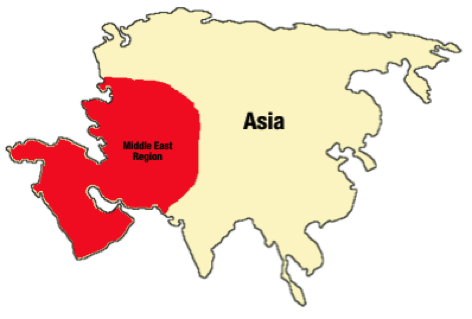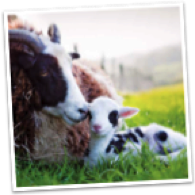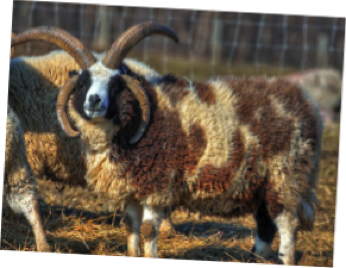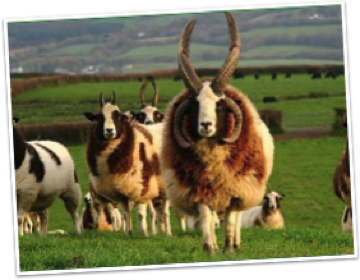About Me
The origins of the Jacob sheep have been obscured in history. They appear in ancient artwork from the Middle East, Asia, the Mediterranean, and as far as England by the 17th century. The Jacob sheep is mentioned throughout the Old Testament and the Hebrew Bible as speckled or spotted sheep. Since the 20th century, their name is attributed to the Biblical figure Jacob, son-in-law of Laban. Jacob’s are one of the earliest known cases of selective breeding. It is said that Jacob collected spotted sheep and began breeding them specifically for their coat pattern. Even with this story, Jacob sheep are considered an heirloom breed, because they have continued to develop with little selection from humans.
The male Jacob sheep’s most distinguishing characteristic is his natural four horns. Jacob sheep, both male and female, will grow horns. The ram, or male, will grow larger and more formidable horns. Commonly the ram will grow two crescent shaped horns from the top of its head and two spiral shaped horns growing to the sides. Occasionally a Jacob ram may grow 2-6 horns. The ewe, or female, generally will only have two smaller horns on the top of their head. The gene that controls the horn's growth is dominant, and may be passed on when a Jacob ram is cross-bred with another breed of domestic sheep.
Jacob sheep are relatively low-maintenance, with a natural resistance to parasites and hoof problems. They are a hardy sheep, good at searching for food sources, and able to survive on poor quality forage. Jacob sheep prosper in extreme temperatures requiring only an open and simple shelter.










Fast Facts
Name: Jacob 4-Horn Sheep
Scientific: Ovis aries
Family: Bovidae
Relatives: Domestic sheep
Environment: Grassland, Semi-Desert
Origin: Middle East
Life-span: 18 years
Size: 80 - 180 lbs

Snapshot
1. Most commonly have 4 horns, but occasionally
may grown 2-6 horns
2. Originated over 3,000 years ago
3. They can make very good pets
Jacob 4-Horn Sheep are also known as the Jacob, spotted, or pie-balled sheep. They are a rare heirloom breed of sheep with no specific known country of origin.
They are considered an “Old World” sheep, and likely developed in what is now known the Middle East, North Africa, and parts of Asia over 3,000 years ago.


Because the Jacob’s wool is multicolored, people can create a variety of color combinations without the need for dying.
Fiber
The Jacob sheep is a rare, but desirable sheep for wool. At adulthood, they have a medium grade wool that does not possess any guard hairs. Like most sheep, Jacobs are sheared in the spring, however some may naturally partially shed their coat as the weather begins to warm. Their wool is particularly sought after by people who hand-spin fleece for its high luster and low lanolin (grease) content. Because the Jacob’s wool is spotted or speckled, the spinners are able to use the black and white wool individually, or mix them for a variety of color combinations. Therefore, the need to dye the wool is reduced.
Meat
Jacob sheep have been used for meat, or mutton, for centuries. They have a lean carcass, and have little external fat. Prior to modern appliances, meat was cooked over an open flame. Mutton can be cooked at higher temperatures without depleting its moisture, making it ideal for outdoor cooking.
Guard & Companion
Sheep are known for being a herd animal that displays flocking behavior. This means they will stay together, and move as a group following a leader. Jacob sheep are one of a few sheep who do not strictly adhere to flocking. They are protective of their surrounding property and other livestock against predators. Many people use them to guard their herds of sheep and goats. When Jacob sheep have been raised with people, they are quite docile and make friendly pets.



